3"/50 (10.2 cm) Marks 2, 3, 5, 6 and 8
Pictures
Updated 06 April 2008
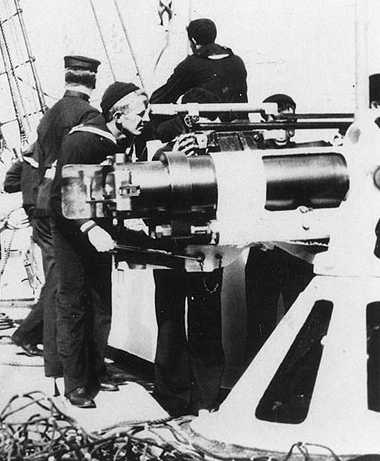
Sighting practice on 3"/50 (7.62 cm) gun
aboard USS Baltimore C-3 about 1905
Note breech shield to protect the gunner
U.S. Naval Historical Center Photograph
# NH 101373

3"/50 (7.62 cm) guns on USS Milwaukee C-17
in April 1916
Detail from U.S. Naval Historical Center
Photograph # NH 46143
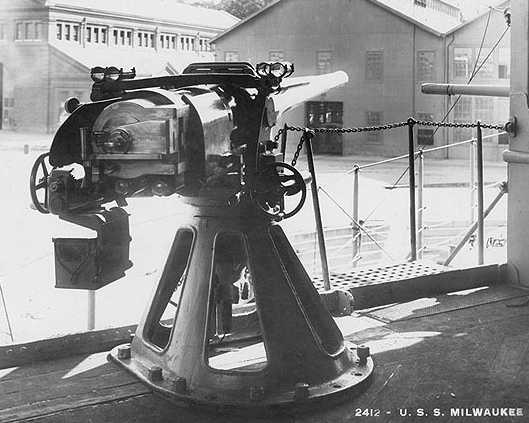
One of the same 3"/50 (7.62 cm) guns as
pictured above. This appears to be either a Mark 2 or a Mark 3 gun.
Detail from U.S. Naval Historical Center
Photograph # NH 46148
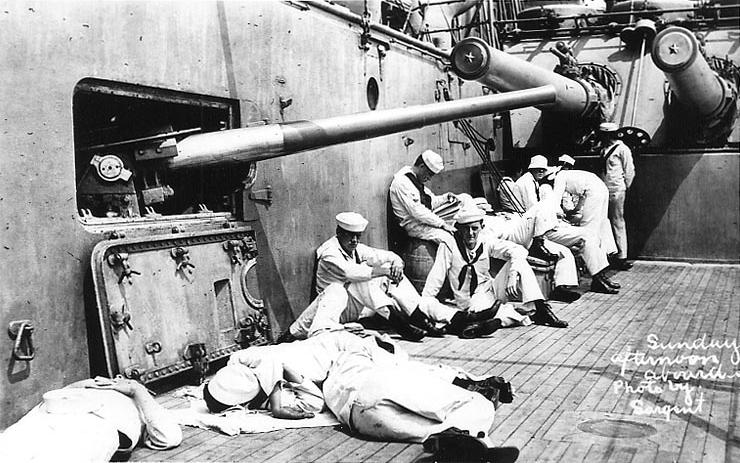
3"/50 (7.62 cm) Casemate gun on USS Rhode
Island B-17 about 1913
Note twin 8"/45
(20.3 cm) turret
U.S. Naval Historical Center Photograph
# NH 101111
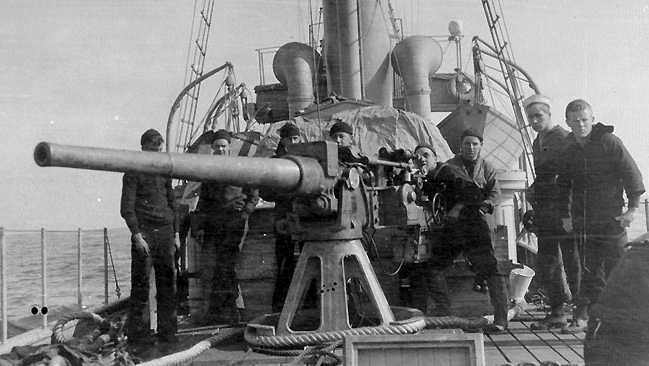
Aft 3"/50 (7.62 cm) gun on Patrol Boat
USS Margret SP-527 in 1917-18
U.S. Naval Historical Center Photograph
# NH 46588
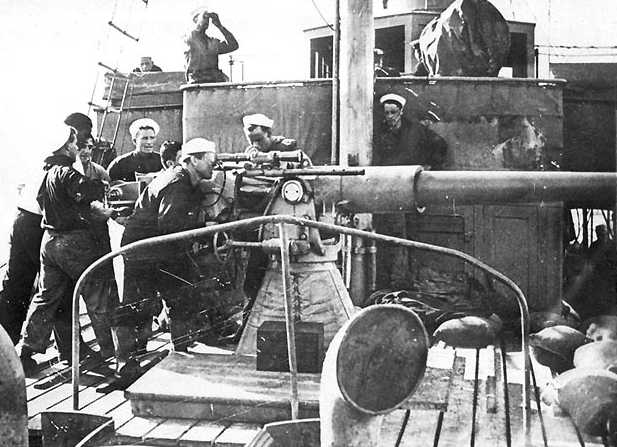
3"/50 (7.62 cm) gun in action on Patrol
Boat USS Rambler SP-211 in 1918
U.S. Naval Historical Center Photograph
# NH 103058
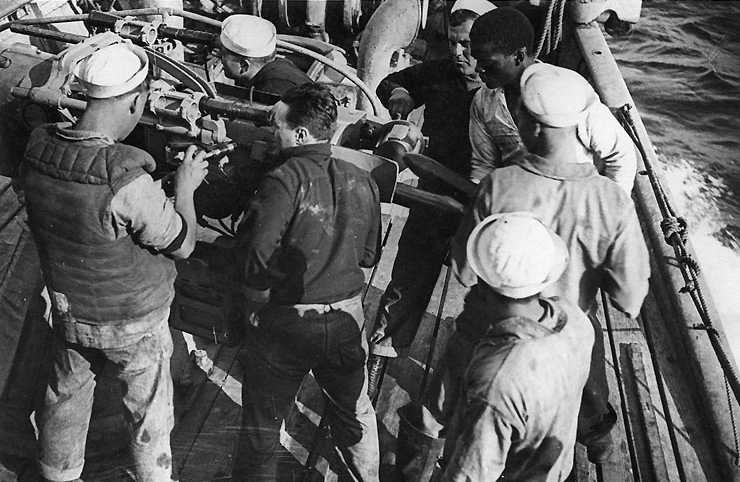
Another view of the above gun, showing
the Welin breech mechanism
U.S. Naval Historical Center Photograph
# NH 41866
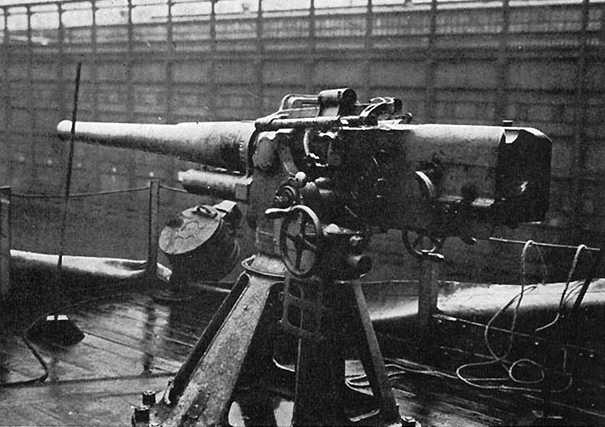
3"/50 (7.62 cm) gun on USS Agamemnon ID
3004 circa 1918-1919
This may be a Mark 5 or Mark 6 gun
U.S. Naval Historical Center Photograph
# NH 103103

Boresighting a 3" (7.62 cm) gun on S.S.
Ockenfels in 1917
A special telescope or bore sight is inserted
in the breech. This process works by first training the gun until
the bore sight is centered on a target point and setting the trainer's
and layer's sights for the proper range and then adjusting the sights until
they are also centered on the target.
U.S. Naval Historical Center Photograph
# NH 41712
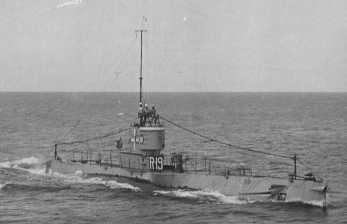
R19 showing bow 3"/50 (7.62 cm)
Note raised telescoping radio mast